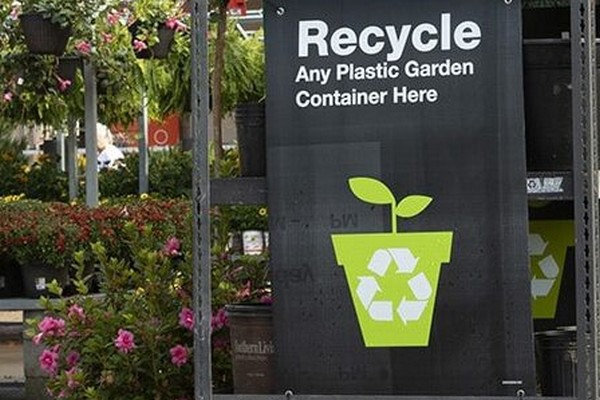Gardening enthusiasts often surround themselves with horticultural containers like pots, trays, and seedling cells. While these containers are vital in nurturing plants, they can also pose environmental challenges when discarded improperly. Recycling horticultural containers is an eco-friendly practice that not only reduces waste but also promotes sustainable gardening. We will explore the importance of recycling horticultural containers and how you can do it effectively.

Horticultural containers, typically made from plastics, ceramics, or other materials, are essential tools for starting and maintaining healthy gardens. However, their widespread use contributes to environmental issues:
- Landfill Waste: When horticultural containers end up in landfills, they take up valuable space and contribute to the accumulation of non-biodegradable waste.
- Resource Depletion: The production of new containers requires the extraction of natural resources, such as petroleum for plastic containers or clay for ceramic pots, contributing to resource depletion.
- Energy Consumption: The manufacturing process for horticultural containers consumes significant energy, adding to greenhouse gas emissions.
- Chemical Pollution: Some older or improperly disposed containers can leach harmful chemicals into the soil, impacting plant health and the environment.
Recycling horticultural containers offers numerous advantages, both for the environment and gardeners. By increasing the amount of recycled horticultural containers, we can reduce the amount of waste entering landfills. This helps create a more sustainable waste management system, especially when the recycled containers are used to create new pots. Recycling used containers conserves valuable resources by reducing the need for new container production, thereby decreasing resource extraction and energy consumption. The recycling process typically consumes less energy compared to manufacturing new containers from raw materials. In turn, the energy saved also contributes to helping our environment! Proper recycling prevents the leaching of harmful chemicals into the soil, safeguarding plant health and environmental integrity.
Recycling horticultural containers can be relatively straightforward if you follow these steps:
- Clean Containers: Thoroughly clean containers to remove any soil, roots, or plant debris. This prevents contamination during the recycling process.
- Sort Materials: Separate containers by material type, such as plastic, ceramic, or terracotta. This makes it easier for recycling facilities to process them efficiently.
- Check Local Recycling Guidelines: Research your local recycling guidelines to determine which types of horticultural containers are accepted for recycling in your area. Some materials may not be recyclable through curbside programs.
- Reuse or Donate: Consider reusing containers for gardening projects or donating them to local schools, community gardens, or gardening clubs.
- Recycle Responsibly: Take the containers to a designated recycling drop-off location, recycling center, or follow your municipality’s guidelines for curbside pickup.
- Support Recycling Initiatives: Encourage and support recycling programs that specifically target horticultural containers, such as collection drives or recycling events.

 The HC Companies
The HC Companies